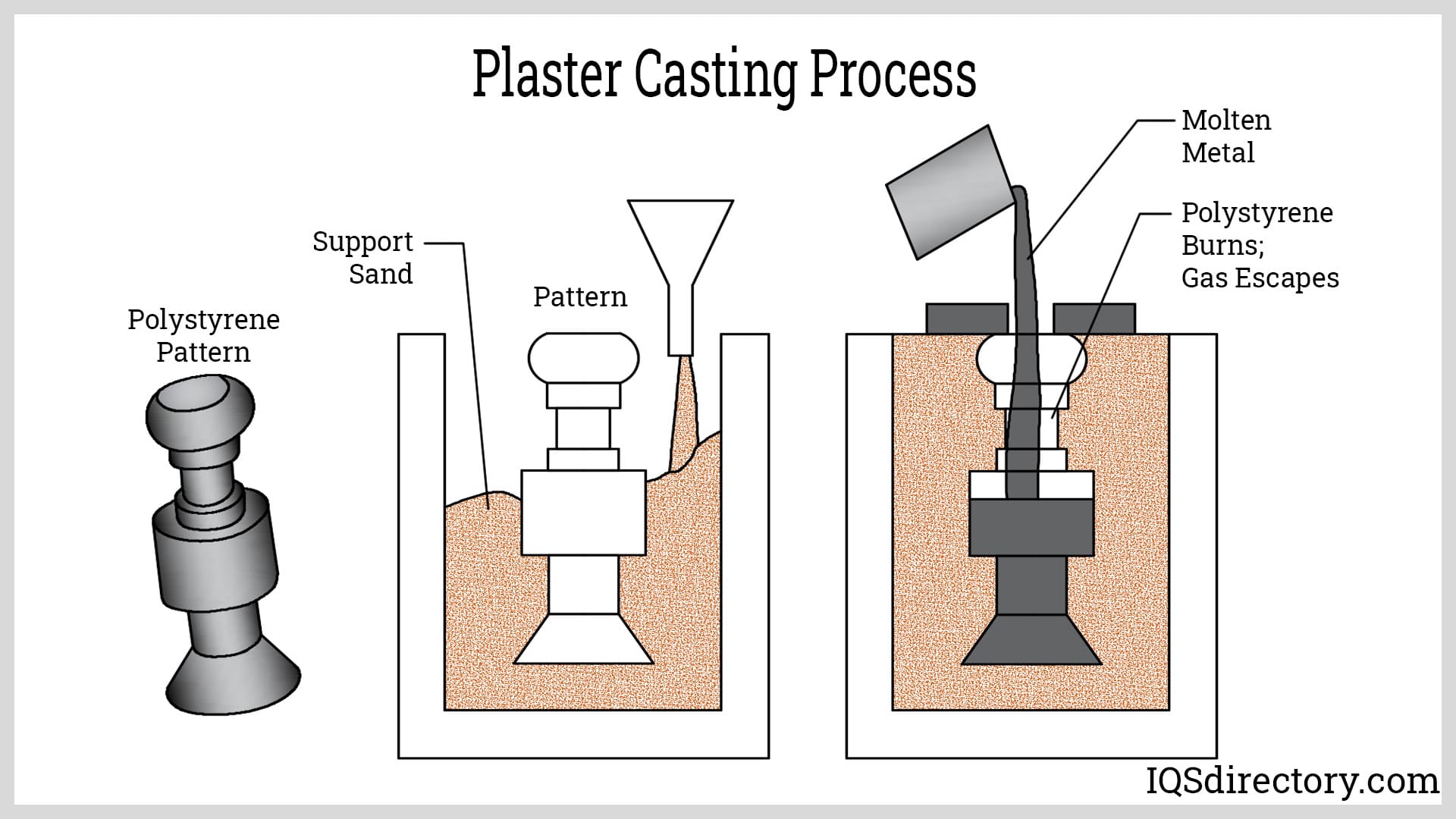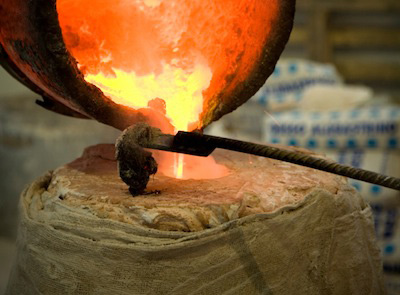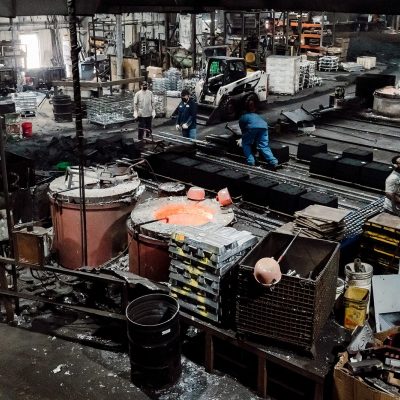What makes Wisconsin Aluminum Foundry a trusted name in casting services
Wiki Article
Recognizing the Steel Castings Refine: A Comprehensive Guide for Beginners
The Metal Casting procedure is an essential strategy in making that changes molten metal right into strong forms. Novices need to grasp the different approaches included, such as sand spreading and die casting. Understanding the materials, layout concepts, and precaution is just as crucial. Each element plays an important role in accomplishing successful end results. As one navigates these ins and outs, the concern of just how to enhance each step for improved results comes to be significantly relevant.The Essentials of Metal Casting
Metal Casting has actually progressed over centuries, its essential concepts stay important and consistent to the production process. At its core, Metal Casting entails the transformation of liquified steel right into solid things via different methods. The process begins with the creation of a mold and mildew, which specifies the form of the final product. As soon as the mold and mildew is prepared, steel is warmed to its melting point and put right into the tooth cavity. After cooling, the steel solidifies, taking the shape of the mold.There are a number of casting methods, consisting of sand spreading, investment casting, and pass away spreading, each with special benefits and applications. The choice of strategy relies on factors such as production volume, product type, and desired precision. When cast, the end product may undergo added processes like machining or surface treatment to attain the required coating and specifications. Understanding these basics is important for anyone interested in the field of Metal Casting.

Understanding Materials Made Use Of in Metal Casting
Products play a crucial role in the Metal Casting process, influencing the end product's buildings and performance. Various steels are utilized, including light weight aluminum, bronze, steel, and iron, each offering distinct features fit for particular applications. Aluminum is corrosion-resistant and light-weight, making it excellent for automotive components. Iron, especially cast iron, is preferred for its outstanding wear resistance and longevity. Steel offers high toughness and convenience, frequently used in hefty machinery elements. Bronze, known for its corrosion resistance and machinability, is typically used in aquatic applications.Along with the metals, numerous casting materials, such as sand, plaster, and ceramic, are used to create molds. Sand spreading, the most widespread method, uses silica sand because of its thermal stability and ability to develop intricate forms. Plaster and ceramic molds use better details but might call for more complex processes. The selection of materials straight influences the performance, expense, and quality of the casting operation.
The Layout Process: From Concept to Blueprint
The style procedure in Metal Casting starts with the preliminary principle advancement, where ideas are created and reviewed. This is adhered to by the application of CAD modeling strategies, enabling for accurate visualizations of the design. Lastly, the plan completion steps guarantee that all requirements are accurately recorded for production.Initial Concept Development
First principle development marks a critical phase in the Metal Casting process, where concepts transform into tangible layouts. During this phase, designers work together with stakeholders and engineers to brainstorm and refine first concepts. They take into consideration elements such as functionality, visual appeals, and manufacturability, ensuring that the design fulfills the called for requirements and performance criteria. Illustrations and rough drafts are developed to imagine the ideas, enabling preliminary assessments of usefulness and cost-effectiveness. This phase additionally involves recognizing products and possible spreading approaches that straighten with the layout objectives. Eventually, first principle development prepares for an extensive plan, assisting the subsequent stages of the casting procedure and guaranteeing an effective change from principle to truth.CAD Modeling Techniques
Transforming concepts right into accurate designs, CAD modeling strategies play an essential role in the Metal Casting process. These strategies utilize advanced software program to produce detailed three-dimensional models that properly mirror the desired item. By utilizing devices such as parametric modeling, solid modeling, and surface modeling, designers can control measurements and forms with simplicity. CAD systems additionally help with simulation and analysis, enabling the recognition of potential imperfections before manufacturing begins. This positive technique minimizes product waste and enhances the design for manufacturability. In addition, CAD models can be conveniently customized, enabling fast models based upon comments. Basically, CAD modeling serves as the foundation of the design procedure, bridging the void in between first concepts and the ultimate production-ready styles.Plan Finalization Steps
Adhering to the creation of thorough CAD designs, the next stage includes plan completion, which is crucial in equating electronic styles right into actionable strategies for production. This process starts with evaluating the CAD versions for precision and conformity with specifications. As soon as confirmed, the measurements, tolerances, and product specifications are thoroughly described to assure quality. Incorporating notes and notes assists connect crucial info regarding casting processes, surface area coatings, and setting up requirements. The finalized blueprint undertakes an extensive approval process, usually including cooperation with designers and production teams to deal with any kind of potential problems. Besides revisions are made and authorizations acquired, the plan is officially released, offering as the foundational document for the succeeding phases of Metal Casting, including pattern making and mold and mildew design.The Metal Casting Techniques Discussed

Metal Casting techniques incorporate a variety of methods made use of to form molten metal into preferred types. These strategies differ according to the kind of product, intricacy of the layout, and production volume. Sand casting is just one of one of the most usual methods, including the development of a mold from sand to hold the liquified steel. Financial investment casting, or lost-wax spreading, enables complex designs by utilizing a wax pattern that is disappeared. Die casting uses high-pressure injection of molten steel right into a mold and mildew, appropriate for mass manufacturing. Other approaches include long-term mold and mildew spreading, which uses multiple-use molds, and centrifugal casting, where rotational pressures aid in loading the mold. Each technique has its applications and benefits, making it essential for makers to pick the suitable technique based upon their certain requirements and needs. Comprehending these techniques is necessary for any individual associated with the Metal Casting procedure.
Finishing Processes: Enhancing Your Casted Item

Completing processes play an essential duty in boosting the top quality and appearance of casted products. Various surface area therapy techniques, such as sprucing up and finishing, are utilized to boost resilience and looks. Furthermore, top quality inspection approaches assure that the last item meets defined requirements and efficiency needs.
Surface Area Therapy Methods
A selection of surface More about the author therapy methods play a necessary duty in enhancing the top quality and long life of casted products. These strategies consist of techniques such as shot blasting, polishing, and coating. Shot blowing up properly removes surface area imperfections, enhancing the visual and functional features of the spreading. Polishing provides a smooth finish, which is especially crucial for decorative applications and elements requiring minimal rubbing. Covering strategies, such as electroplating or powder finish, deal additional security versus rust and wear, guaranteeing sturdiness. Moreover, surface area treatments can improve adhesion for subsequent processes, such as painting or bonding. By employing these methods, manufacturers can attain exceptional surface top quality, which is critical for the efficiency and life-span of Metal Casting in different applications.Top Quality Assessment Approaches
Effective high quality assessment methods are crucial for guaranteeing the integrity and efficiency of casted products after the ending up procedures. Numerous techniques are utilized to evaluate the top quality of Metal Casting, including visual examination, dimensional checks, and non-destructive testing (NDT) Visual evaluation permits the recognition of surface issues, while dimensional checks guarantee that items fulfill specified tolerances. NDT techniques, such as ultrasonic screening and radiographic assessment, offer much deeper insights into inner honesty without damaging the castings. Furthermore, mechanical testing, such as tensile and hardness tests, assesses product properties - Wisconsin Aluminum Foundry. By utilizing a mix of these methods, manufacturers can improve product high quality and integrity, ultimately bring about higher client satisfaction and reduced production expensesSecurity Considerations in Metal Casting
While the Metal Casting process supplies various advantages, it also provides a series of security hazards that must be carefully managed. Employees in casting facilities are revealed to heats, molten metals, and unsafe materials, which can cause extreme injuries if correct precautions are not taken. Individual protective equipment (PPE) such as heat-resistant handwear covers, encounter guards, and protective garments is crucial to reduce threats.Furthermore, the existence of fumes and dirt requires proper air flow systems to guarantee air quality - Wisconsin Aluminum Foundry. Routine training on safety and security protocols is important for all staff members to recognize prospective threats and respond properly. Emergency situation treatments must be established, consisting of fire security steps and first aid schedule. Upkeep of equipment and appropriate handling of products further add to a much safer working setting. By prioritizing these security factors to consider, Metal Casting operations can safeguard their workforce and maintain efficient production procedures
Frequently Asked Concerns
What Are the Ecological Influences of Metal Casting?
Metal Casting can result in environmental effects such as air and water pollution, resource depletion, and power consumption. Additionally, inappropriate waste management and exhausts from shops add to ecological disturbances and wellness threats for neighboring communities.How Do I Choose the Right Metal for Casting?
To choose the appropriate metal for casting, one should consider elements such as mechanical homes, Visit Website deterioration resistance, thermal conductivity, and price. Evaluating the intended application and environmental problems is important for excellent choice.What Are the Usual Problems in Metal Casting?
Typical issues in Metal Casting include porosity, shrinking, sand addition, and misruns. These problems often occur from incorrect product selection, insufficient layout, or imperfections in the casting process, impacting the final product's top quality and efficiency.
Exactly How Can I Improve My Metal Casting Abilities?
To boost Metal Casting abilities, one ought to exercise constantly, research study spreading techniques, examine previous jobs for defects, seek comments from skilled wheels, and continuously try out various products and approaches to enhance effectiveness and understanding.What Is the Price of Starting a Steel Spreading Organization?
Beginning a metal spreading organization usually requires an initial investment of $5,000 to $50,000, relying on equipment, materials, and facility expenses. Factors like place and scale can substantially influence general start-up expenditures.The Metal Casting procedure is a fundamental strategy in producing that transforms molten steel into solid kinds. Novices need to comprehend the different approaches included, such as sand casting and die casting. There are several casting techniques, including sand casting, investment casting, and pass away spreading, each with unique benefits and applications. Investment casting, or lost-wax spreading, allows for read the full info here detailed designs by making use of a wax pattern that is melted away. Various other approaches consist of irreversible mold casting, which uses reusable molds, and centrifugal casting, where rotational pressures aid in filling up the mold and mildew.
Report this wiki page